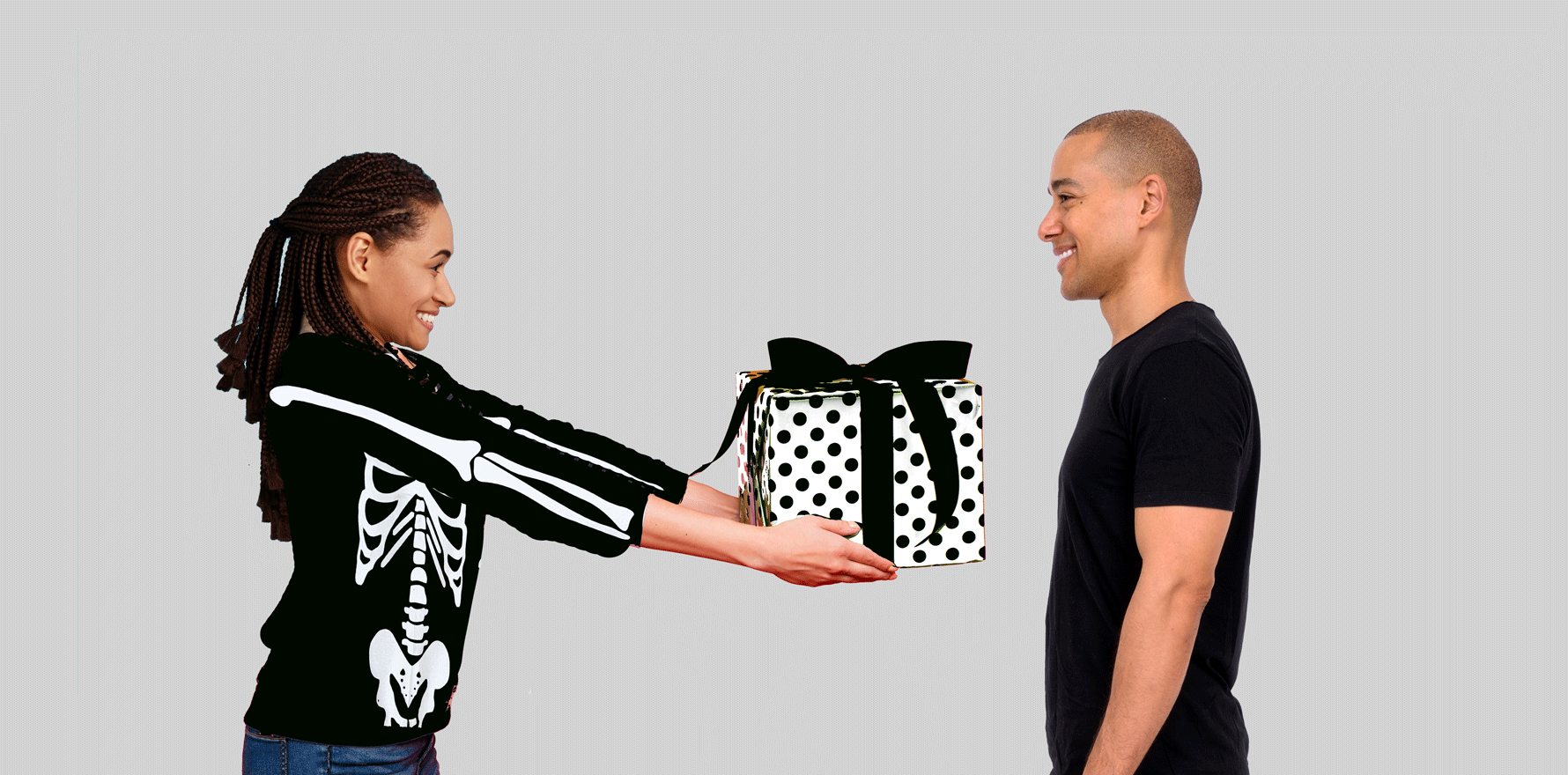What do you do when you find a genetic mutation that doesn’t belong to you?
Cancer is not something patients go on waiting lists to obtain, but occasionally a lifesaving tissue donation comes with an unwanted bonus.
Earlier this year at the RCPA’s Pathology Update, “Answers in Adelaide”, haematologist Associate Professor David Ross gave a talk that left attendees with more questions than answers.
Professor Ross, a consultant with SA Pathology, shared the story of a 58-year-old man with acute myeloid leukaemia whose cancer relapsed after receiving a haemopoietic stem cell transplant from a matched but unrelated donor.
As part of the man’s treatment, a myeloid panel revealed a germline pathogenic variant in the CHEK2 gene, which is associated with an increased risk of developing solid cancer. The recommended management for patients with these mutations is early mammography and colonoscopy.
Further testing suggested the pathogenic mutation came from the donated material, rather than from the original patient.
This is where things got complicated.
Finding a mutation’s rightful owner
Associate Professor Anna Brown, head of molecular oncology at SA Pathology, tells Oncology Republic it’s quite tricky to determine whether a mutation has occurred in the patient or the donor, especially if the sample available for analysis is a tumour biopsy.
She says chimerism genetic testing, which is often done in patients who receive a bone marrow transplant, can be used.
“[This test] measures the proportion of donor and recipient blood cells in the bone marrow or the blood,” she says. “They track [the proportion] over time to see how well the transplant has worked in the first place. But if the patient relapses, you can also measure again over time to see if the proportions have changed.”
Confirming whether a mutation occurred in the donor or the recipient requires additional genetic testing.
“The only way to prove the origin of any mutations you find is to test either a non-tumour specimen, or in this case, a non-haematological specimen like hair follicles from the recipient and the donor to see if either of those samples [also] carry the incidental finding,” Professor Brown says.
Incidental findings such as this are not as rare as you would think.
“Many donors are family members. If you’ve had a cancer yourself, the chances that there’s something inherited in your family are going to be higher than [they would be] in the general community or population.
“It’s [still] going to be rare but considering there are tens of thousands of transplants done around the world every year, it’s still going to happen on a recurring basis.”
Identifying incidental findings – especially in donor materials – is rare in normal clinical care, Professor Brown says. But the phenomenon is becoming more common in clinical trials and other dedicated research settings due to larger and more comprehensive testing panels.
“Instead of looking at five to 10 genes, or regions of genes, you’re looking at testing in the order of up to 500 genes instead. The probability of finding something goes up with an expansion in the panel size.”
The incidental finding in the case presented by Professor Ross would not have been picked up using a standard panel. It was found using a broader screening panel as part of a clinical trial.
Opening Pandora’s box
Professor Ross’s presentation prompted a discussion around the privacy and ethical considerations of genetic testing, as according to an NMHRC-developed paper for health professionals ordering a genetic test, genetic counselling and written consent is required when the “specimen for testing is from a clinically unaffected adult and the test is predictive of a disease for which interventions are of limited efficacy or carry substantial risks and costs”.
“The hardline [interpretation] is to say that if the donor has not been provided with that information, and not provided consent, then you may not test that sample,” said Professor Ross, who questions whether the notion of potential future testing needs to be added to the already long list of things donors have to have explained and consent to.
Adding it would address certain issues, but it would mean the process of explaining everything to the patient and obtaining informed consent would be even longer than it is now.
This could also disadvantage patients who have received donor material in the past, as they technically cannot provide consent to test genetic material that isn’t theirs. Professor Ross highlighted that although the international transplant community was aware of this issue, they were yet to reach a consensus on how best to deal with it.
Professor Brown highlighted another potential issue with consent in materials donated to and held within a tissue bank.
Related
“You don’t know where or how your sample is going to be used, and I don’t know how long some of these samples are stored [for], so people may be receiving cryopreserved stem cells from a sample that was collected some time ago. And in the meantime, the types of tests that are being applied in the genetic testing landscape [have] completely changed,” Professor Brown said.
Professor Brown recommended making changes to the consent process for people signing up to be donors so they are aware of the likelihood that genetic testing may be done in the future and understand that the implications of the results could apply to their genomes as well.
Professor Brown also postulated that pre-screening donors for potential deleterious mutations could be helpful in lowering the risk of identifying incidental findings in the future, just as other bodily organs need to meet certain criteria before they are transplanted into a recipient.
The right not to know
While some people will want to know if they carry a genetic mutation that could potentially cause cancer, others may not be so receptive to this knowledge, according to Professor Ross. This can cause its own set of headaches, but it really comes down to whether the information can be acted on.
“On the one hand, people have a right not to know. If I’m at risk of getting leukaemia in the future, but I can’t do anything about it, then maybe I’m better off being blissfully unaware,” Professor Ross tells OR.
“But on the other hand, if I might have an increased risk of breast or bowel cancer, then I can have mammograms or faecal occult blood tests that may enable early detection and removal of the cancer, which could potentially be lifesaving. So, in those cases, one would argue that even if the donor doesn’t know anything about it, he or she would benefit from [knowing about] this incidental finding.
“It actually cuts both ways. You might provide people with information that they can’t change [or] do anything about, [which] causes anxiety. But you might also find something that’s potentially lifesaving for that person, and then maybe you have an ethical responsibility to ensure that the person is notified.
“It depends on whether what you have found is actionable.”
The American College of Medical Genetics and Genomics maintains a list of genes they consider “actionable” with respect to reporting secondary findings of pathogenic and likely pathogenic variants in clinical exome and genome sequencing. The most recent list was published in 2023.
Professor Brown agrees there is merit to using actionability to help guide this decision-making process, but says it is hard to know a donor’s wishes if this hasn’t been raised before they donated the sample.
All’s well that ends well?
In the end, the trail went cold for Professor Ross. He attempted to contact the donor through the local transplant office but was denied. The office sent Professor Ross to the transplant physician, who was instructed to liaise with the transplant agency to contact the donor, who was believed to be in Europe.
“The sample was sent to us as part of a clinical trial. We notified the referring doctor that we had this suspicion, but then it’s up to that doctor to decide whether to go back and notify the donor site,” Professor Ross says.
“The way things are meant to happen with transplantation is that the transplant consultant is responsible for reporting back to the site that arranged the donation. If it’s somebody [from] overseas, there’ll be a donor site who saw and talked to the person. The result will be fed back to the registry where the donor came from, then they have to decide what to do with this information.
“There’s a chain of communication [in place so] we would never have any contact with the unrelated donor.”



